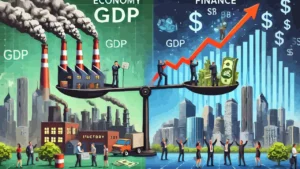In recent history, some of the most spectacular corporate failures have caused devastating losses for investors, workers, and entire economic sectors. In this article, we analyze nine of the most spectacular corporate failures, not only in terms of the size of the losses, but also in terms of their systemic scope, their market deception, and their legal and political consequences.
Each chapter tells the story of the company’s genesis, its rise, its crisis, its fraud, and its recovery (if any) for shareholders and bondholders.
Contents
- Lehman Brothers (U.S.A.)
- Enron (U.S.A.)
- Wirecard (Germany)
- WorldCom (U.S.A.)
- Parmalat (Italy)
- Madoff Investment (U.S.A.)
- FTX (U.S.A.)
- Evergrande (China)
- Theranos (U.S.A.)
#1. Lehman Brothers (U.S.A.)
Founded in 1850 in Montgomery, Alabama, as a cotton trading house, Lehman Brothers became one of Wall Street’s most prestigious investment banks. After more than 150 years of operations, it specialized in mergers and acquisitions, investment banking, and derivatives trading.
The crisis began in the 2000s with the US housing bubble. Lehman took massive exposure to subprime mortgages, buying millions of dollars in high-risk assets. When the housing market collapsed in 2007-2008, the mortgage-backed securities rapidly devalued, leaving the bank with toxic balance sheets and uncontrollable losses.
The “scam” was not strictly speaking fraud, but rather deeply flawed and opaque risk management. Lehman used questionable accounting practices (such as “Repo 105”) to mask its indebtedness. In September 2008, the bank filed for bankruptcy, with liabilities of approximately $613 billion.
| Capitalization Before Bankruptcy ($) | Total Losses for Investors ($) | Recovery for Shareholders | Recovery for Bondholders |
|---|---|---|---|
| 45 billion | 600 billion | 0% | less than 20% |
The failure triggered the global financial crisis and led to massive bailouts of other financial institutions.
#2. Enron (U.S.A.)
Enron Corporation was formed in 1985 through the merger of Houston Natural Gas and InterNorth. Initially active in the energy sector, it transformed itself in the 1990s into an energy trading and innovative financial services company, taking advantage of the deregulation of the electricity market in the United States. The business model involved trading energy futures contracts, but over time Enron went much further, creating complex and opaque financial instruments.
The crisis stemmed from Enron’s growing reliance on special purpose entities (SPEs) to hide debts and losses. With the complicity of the accounting firm Arthur Andersen, Enron built a house of cards based on cooked books and fictitious transactions. In 2001, following a press investigation and the collapse of investor confidence, it emerged that the company had hidden more than $30 billion in debts through more than 3,000 offshore entities.
The crash came quickly: in December 2001, Enron filed for bankruptcy, the largest in American history up to that point. The company lost all value, dozens of executives were indicted, and Arthur Andersen was dissolved.
| Capitalization Before Bankruptcy ($) | Total Losses for Investors ($) | Recovery for Shareholders | Recovery for Bondholders |
|---|---|---|---|
| 70 billion | 74 billion | 0% | 14-18% |
The Enron case led to a wave of financial transparency reforms, culminating in the Sarbanes-Oxley Act of 2002, which revolutionized corporate governance in the United States.
#3. Wirecard (Germany)
Wirecard AG was founded in 1999 in Germany as an electronic payment processing company. Initially active in the micropayments sector for online content, the company grew rapidly, acquiring several companies and presenting itself as a leading tech-finance in the digital payments sector. In 2018, it entered the prestigious DAX 30 stock index, replacing Commerzbank.
The crisis stemmed from years of suspicions raised by journalists and analysts about the true state of the accounts. The Financial Times published in-depth investigations that revealed possible irregularities, but Wirecard responded by threatening legal action. However, in 2020, the company was forced to admit that around 1.9 billion euros declared in trust accounts in the Philippines were missing. Investigations showed that the funds never existed.
CEO Markus Braun was arrested and COO Jan Marsalek fled abroad. The scam was systemic and had been going on for years, based on false transactions with fictitious partners in Asia and the Middle East. Auditor Ernst & Young claimed to have been duped, but was widely criticized for poor oversight.
| Capitalization Before Bankruptcy ($) | Total Losses for Investors ($) | Recovery for Shareholders | Recovery for Bondholders |
|---|---|---|---|
| 24 billion | 20 billion | 0% | less than 5% |
The Wirecard affair was an earthquake for German finance, revealing shortcomings in BaFin’s supervision and seriously damaging the reputation of Frankfurt’s financial center.
#4. WorldCom (U.S.A.)
WorldCom began in 1983 as Long Distance Discount Services, Inc. (LDDS) and quickly established itself in the telecommunications industry through a series of aggressive acquisitions. In the 1990s, under CEO Bernard Ebbers, WorldCom merged with MCI Communications, becoming the second-largest telephone operator in the United States.
The business was based on long-distance communications services, but the growth strategy was heavily dependent on acquisitions and aggressive debt expansion. When revenues began to slow, management attempted to mask the difficulties with one of the most serious accounting frauds in American history.
Between 1999 and 2002, WorldCom overstated its earnings by more than $11 billion by improperly classifying operating expenses as capital expenditures. This allowed the company to appear more profitable than it actually was, keeping its stock price artificially high. When the fraud was discovered in 2002, the stock price plummeted and the company filed for bankruptcy.
The crash caused thousands of layoffs, destroyed the pension savings of many employees and investors, and undermined confidence in the stock market. Bernard Ebbers was sentenced to 25 years in prison.
| Capitalization Before Bankruptcy ($) | Total Losses for Investors ($) | Recovery for Shareholders | Recovery for Bondholders |
|---|---|---|---|
| 180 billion | 100 billion | 0% | 10-20% |
The WorldCom case directly contributed to the creation of the Sarbanes-Oxley Act, along with Enron, and marked a turning point in accounting regulation and oversight of public companies.
#5. Parmalat (Italy)
Parmalat was founded in 1961 in Collecchio, in the province of Parma, by Calisto Tanzi. The company quickly became a giant in the food industry, specializing in long-life milk, and later expanding its portfolio to include fruit juices, baked goods, and mineral water. By the 1990s, Parmalat had transformed into a multinational with over 36,000 employees and operations worldwide.
The crisis was caused by opaque management and aggressive expansion financed by mounting debt. To mask the true financial situation, Parmalat created an intricate network of offshore companies, false bank documentation and fictitious transactions. In December 2003, the scandal broke: a €14 billion hole in the accounts came to light when it was discovered that an alleged €3.9 billion account at Bank of America did not exist.
The fraud was mainly orchestrated by Calisto Tanzi and the top management, with the complicity of external auditors. The subsequent investigation revealed one of the largest cases of financial fraud ever seen in Europe, with falsified documentation and funds diverted to tax havens. Tanzi was sentenced to several years in prison for fraudulent bankruptcy and stock market manipulation.
| Capitalization Before Bankruptcy ($) | Total Losses for Investors ($) | Recovery for Shareholders | Recovery for Bondholders |
|---|---|---|---|
| 1.8 billion | 14 billion | 0% | 20-25% |
The Parmalat case profoundly shook the Italian and European markets, leading to a reflection on the role of auditors, investment banks and Consob. After the crisis, the company was restructured and relaunched on the market, later becoming part of the Lactalis group.
#6. Madoff Investments (U.S.A.)
Founded in the 1960s by Bernard Madoff, the firm became one of the most respected investment houses on Wall Street. Madoff even served as chairman of the Nasdaq in the 1990s, and his reputation attracted institutional and high-net-worth individuals from around the world. The firm’s formal division handled market-making and brokerage, while asset management was kept in a separate, highly secretive office.
The crash was caused by a decades-long Ponzi scheme. Madoff promised steady, above-market returns, which in reality did not come from real investments but from money paid by new customers. When investors began demanding their funds back in 2008 following the global financial crisis, the entire system collapsed due to lack of liquidity.
The scam was perfectly engineered: fake statements, a separate computer system to create fictitious account statements, and an air of exclusivity that made customers reluctant to ask too many questions. In December 2008, Madoff was arrested and confessed to orchestrating the largest financial fraud in modern history.
| Capitalization Before Bankruptcy ($) | Total Losses for Investors ($) | Recovery for Shareholders | Recovery for Clients/Investors |
|---|---|---|---|
| 65 billion | 17 billion | unlisted | 70% |
The Madoff case had a devastating impact on foundations, pension funds, institutional investors, and families. The case raised questions about SEC oversight and the culture of silence in high finance. Madoff was sentenced to 150 years in prison and died in prison in 2021.
#7. FTX (U.S.A.)
FTX was founded in 2019 by Sam Bankman-Fried and Gary Wang, presenting itself as an advanced platform for trading cryptocurrencies and digital derivatives. Thanks to an aggressive marketing strategy, sports sponsorships and institutional alliances, FTX quickly became a leading global exchange, valued at up to $32 billion in 2022.
Behind the appearance of innovation, however, was opaque and risky management. FTX operated in close connection with Alameda Research, a trading firm controlled by Sam Bankman-Fried himself. Client assets were transferred without authorization from FTX to Alameda, which used them for speculative bets, covering losses with funds that were not its own.
The crisis erupted in November 2022, when a news investigation revealed severe asset imbalances between FTX and Alameda. Trust collapsed, leading to a wave of withdrawal requests. FTX blocked withdrawals and filed for bankruptcy a few days later. Sam Bankman-Fried was arrested in the Bahamas and later extradited to the United States, where he faces charges of fraud, money laundering, and violating campaign finance laws.
The scam consisted of misuse of client funds, falsification of accounting data and completely inadequate management. The entire board was composed of people linked to the administrator and without real internal control. FTX was supposedly audited, but without real independent supervision.
| Capitalization Before Bankruptcy ($) | Total Losses for Investors ($) | Recovery for Shareholders | Recovery for Clients/Investors |
|---|---|---|---|
| 32 billion | 8-10 billion | 0% | 30-50% |
The FTX case has had a huge impact on confidence in the cryptocurrency world and has triggered new calls for regulation globally. Its meteoric rise and fall represents one of the biggest corporate failures of the 21st century.
#8. Evergrande (China)
China Evergrande Group, founded in 1996 by Xu Jiayin, quickly became one of China’s leading real estate giants. The group specialized in building large residential complexes, often sold off-plan before construction. The expansion was fueled by an extreme use of debt and a network of more than 1,300 projects in more than 280 Chinese cities.
For years, Evergrande benefited from China’s urban growth and real estate boom, but the expansion was fueled by an unsustainable model. The company financed new projects by borrowing heavily, often from private customers and retail investors, promising high returns. Total debt topped $300 billion, the highest ever for a private company in the sector.
The crisis began in 2020 with the Chinese government’s crackdown on real estate leverage, known as the “three red lines” policy. Evergrande could no longer refinance its debt and began missing payments on domestic and international bonds. In 2021, it defaulted on several dollar bonds and the situation quickly worsened.
It was not a fraud in the strict sense, but an excess of leverage accompanied by opaque accounting and the advance collection of funds from clients for unfinished projects. The Chinese authorities intervened to contain the systemic damage, but the domino effect was felt throughout the construction sector and local economies.
| Capitalization Before Bankruptcy ($) | Total Losses for Investors ($) | Recovery for Shareholders | Recovery for Bondholders |
|---|---|---|---|
| 50 billion | 100 billion | almost 0% | 10-25% |
The Evergrande case has shown the world the fragilities of China’s real estate-based growth model and has pushed Beijing to rethink the dynamics of credit and regulation of the sector.
#9. Theranos (U.S.A.)
Theranos was founded in 2003 in Palo Alto by Elizabeth Holmes, a young entrepreneur who promised to revolutionize the medical industry. The idea was simple but revolutionary: perform accurate blood tests using just a few drops of blood, using a compact machine called Edison. The project quickly attracted the interest of investors, politicians and the media, bringing the company’s valuation to over $9 billion.
Despite promises, the technology didn’t work. For years, Theranos hid its failures, testing with traditional machines to maintain the illusion of success. Employees who raised concerns were silenced or fired. The internal culture was rigid, hierarchical, and marked by absolute secrecy.
The crisis erupted in 2015, when the Wall Street Journal published an investigation questioning the effectiveness of Edison’s technology. The investigation revealed that the devices were unreliable, that test data was manipulated, and that the FDA had never approved the machine for widespread use. Theranos was built on a scientific scam, supported by aggressive marketing and a charismatic narrative.
Elizabeth Holmes was charged with fraud and convicted in 2022 for intentionally deceiving investors and patients. COO Ramesh “Sunny” Balwani was also convicted. The entire episode became a landmark case of Silicon Valley excess.
| Capitalization Before Bankruptcy ($) | Total Losses for Investors ($) | Recovery for Shareholders | Recovery for Bondholders |
|---|---|---|---|
| 9 billion | 700 million | 0% | absent |
Theranos’s failure has opened a global debate about the ethics of innovation, investment diligence, and the risks of overconfidence in unverified entrepreneurial narratives.











Leave a Reply